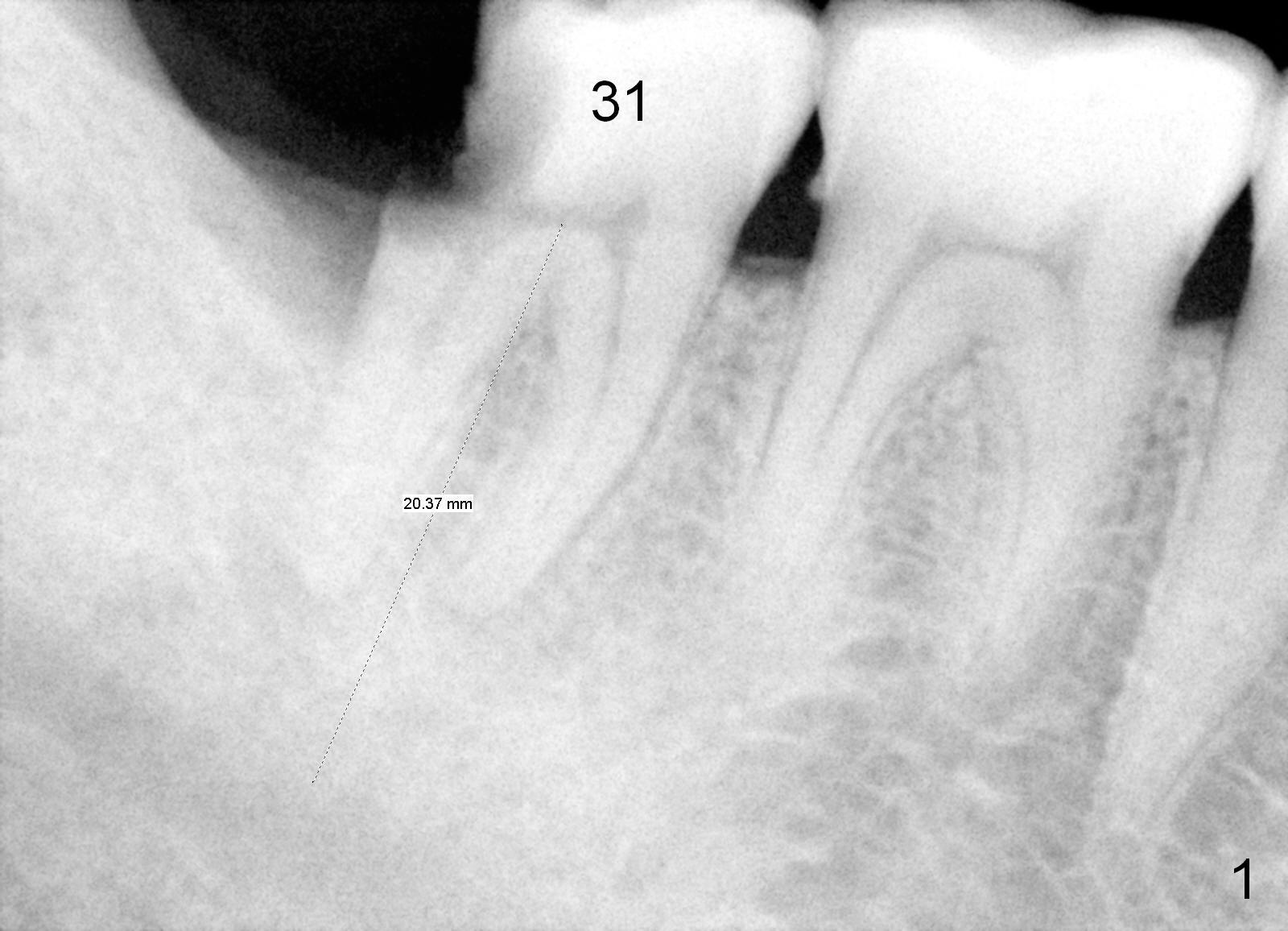
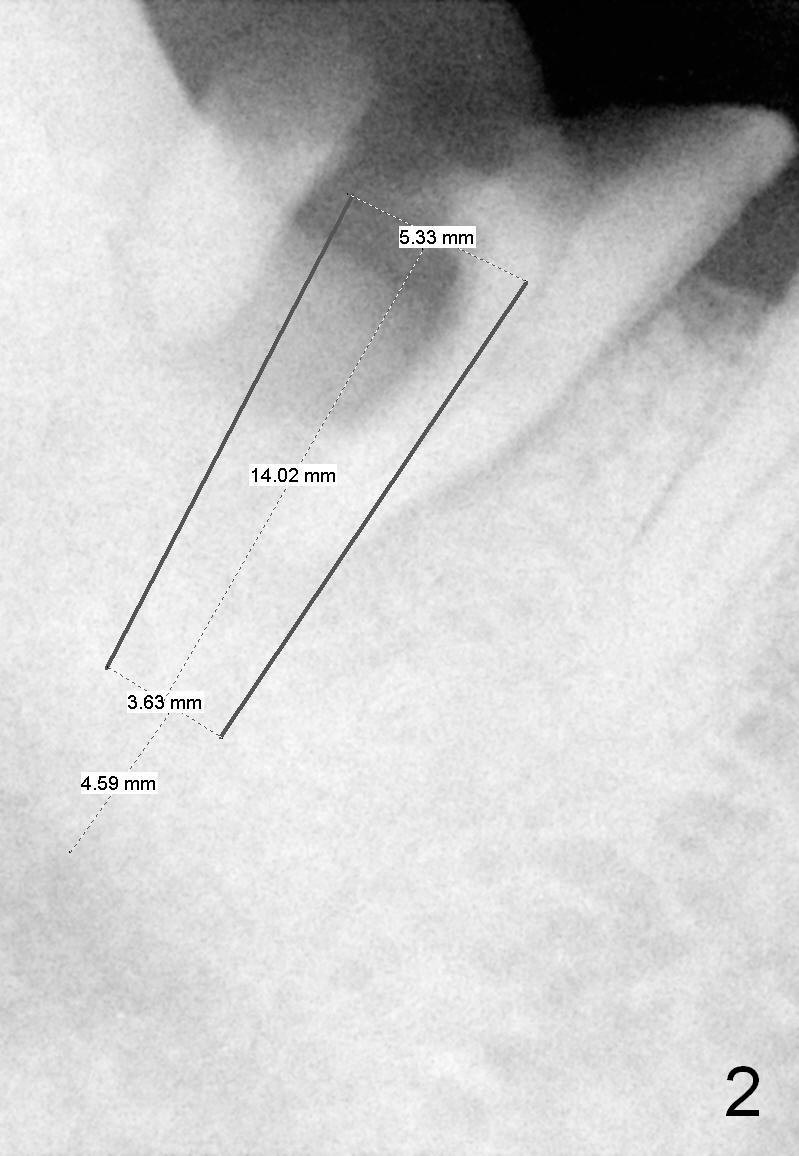
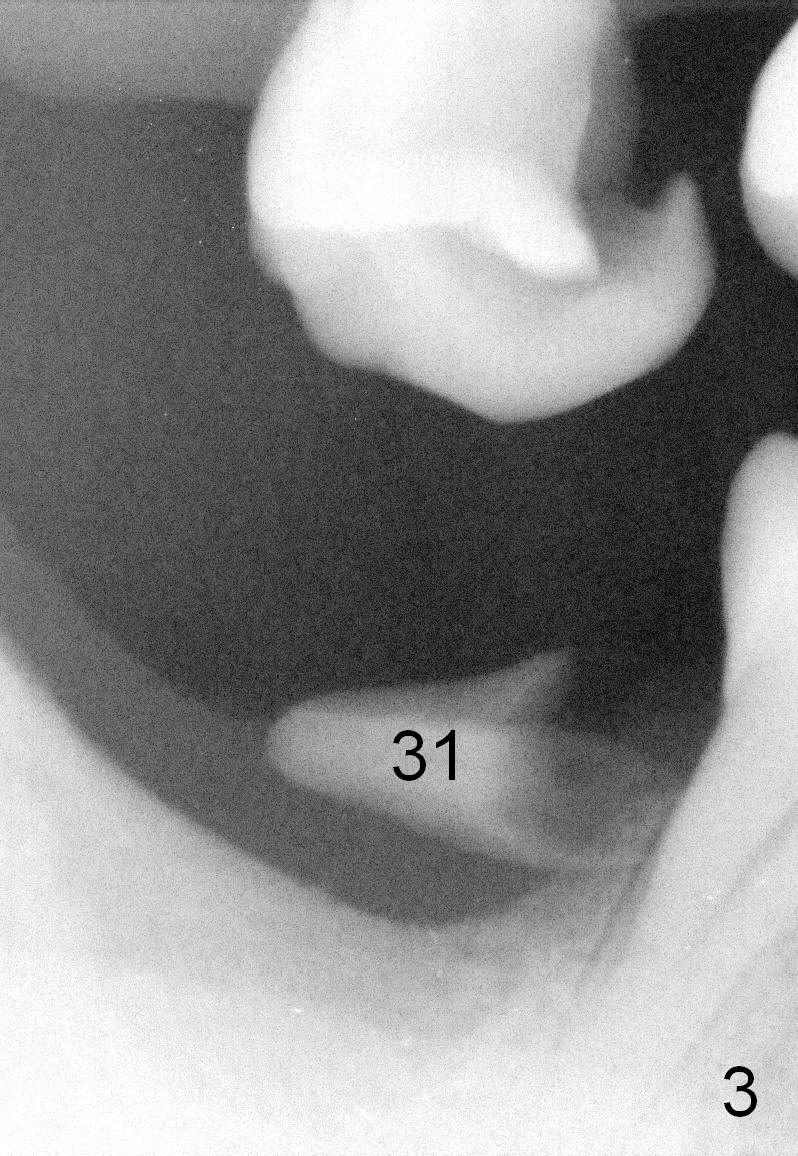
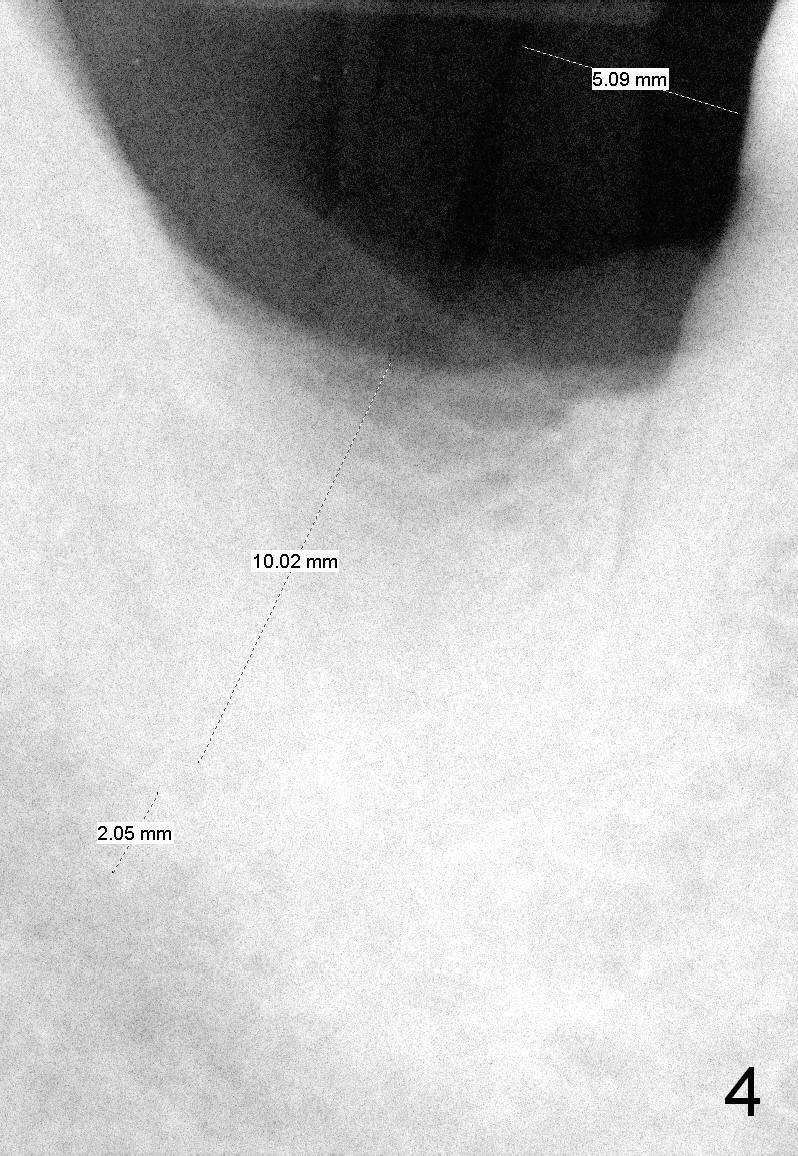
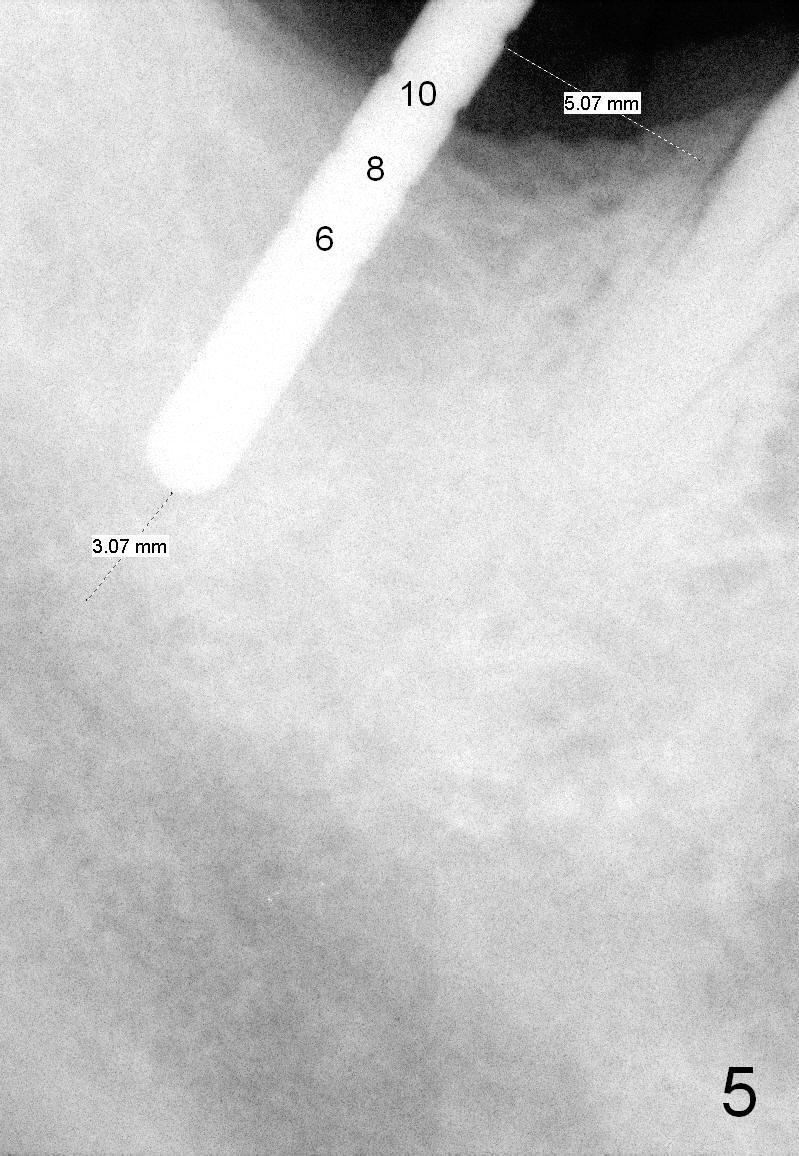
.jpg)
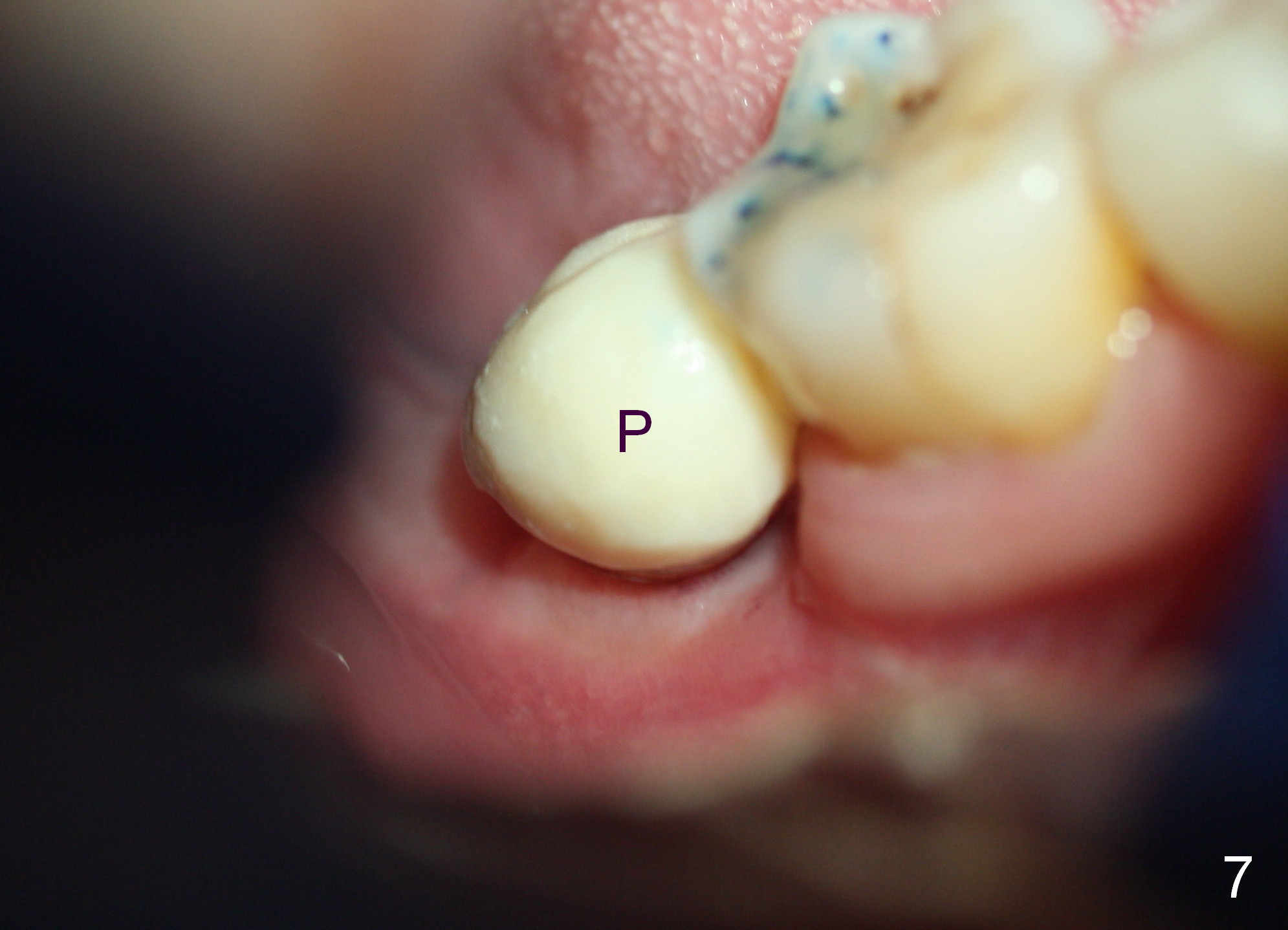
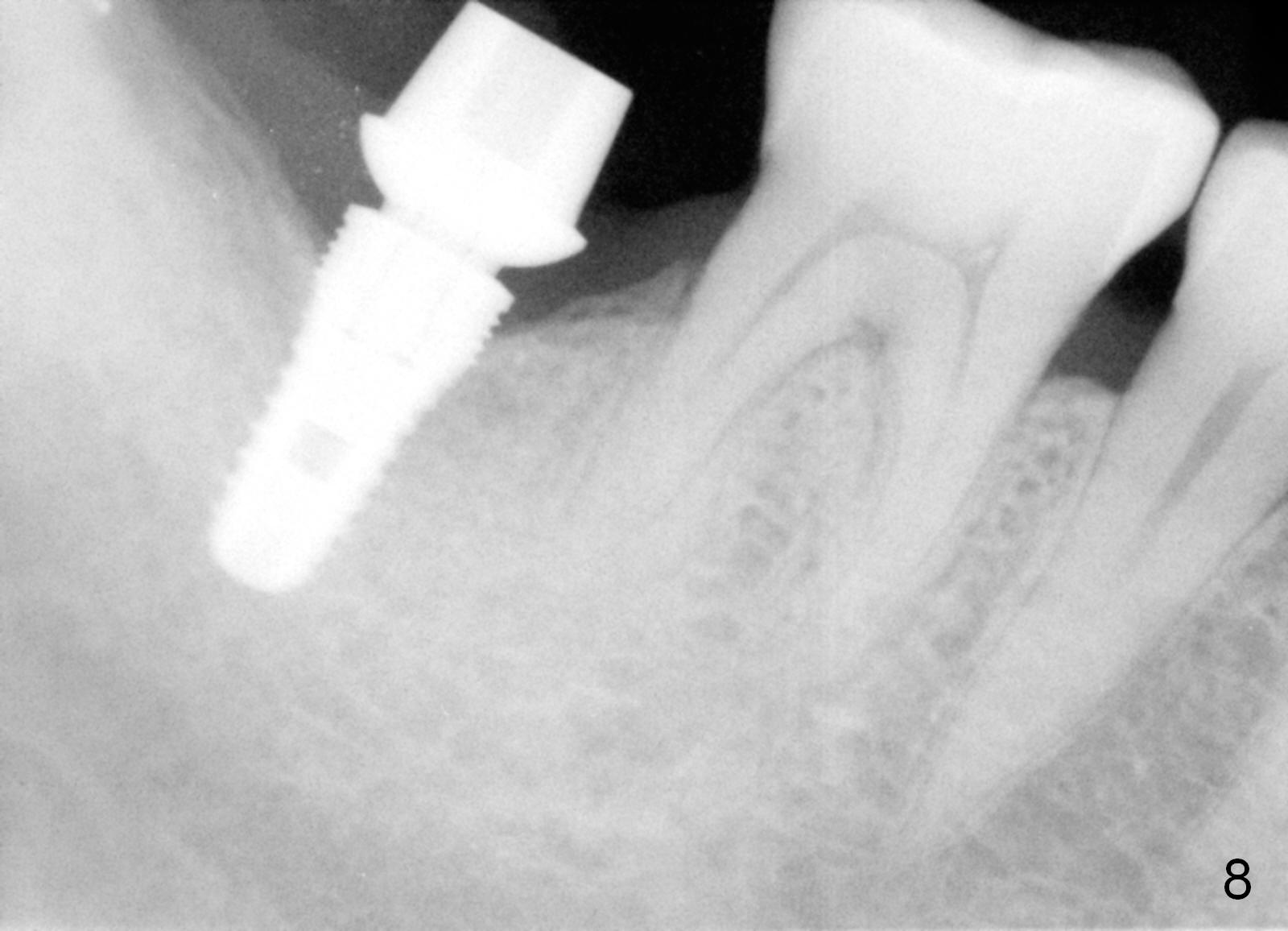
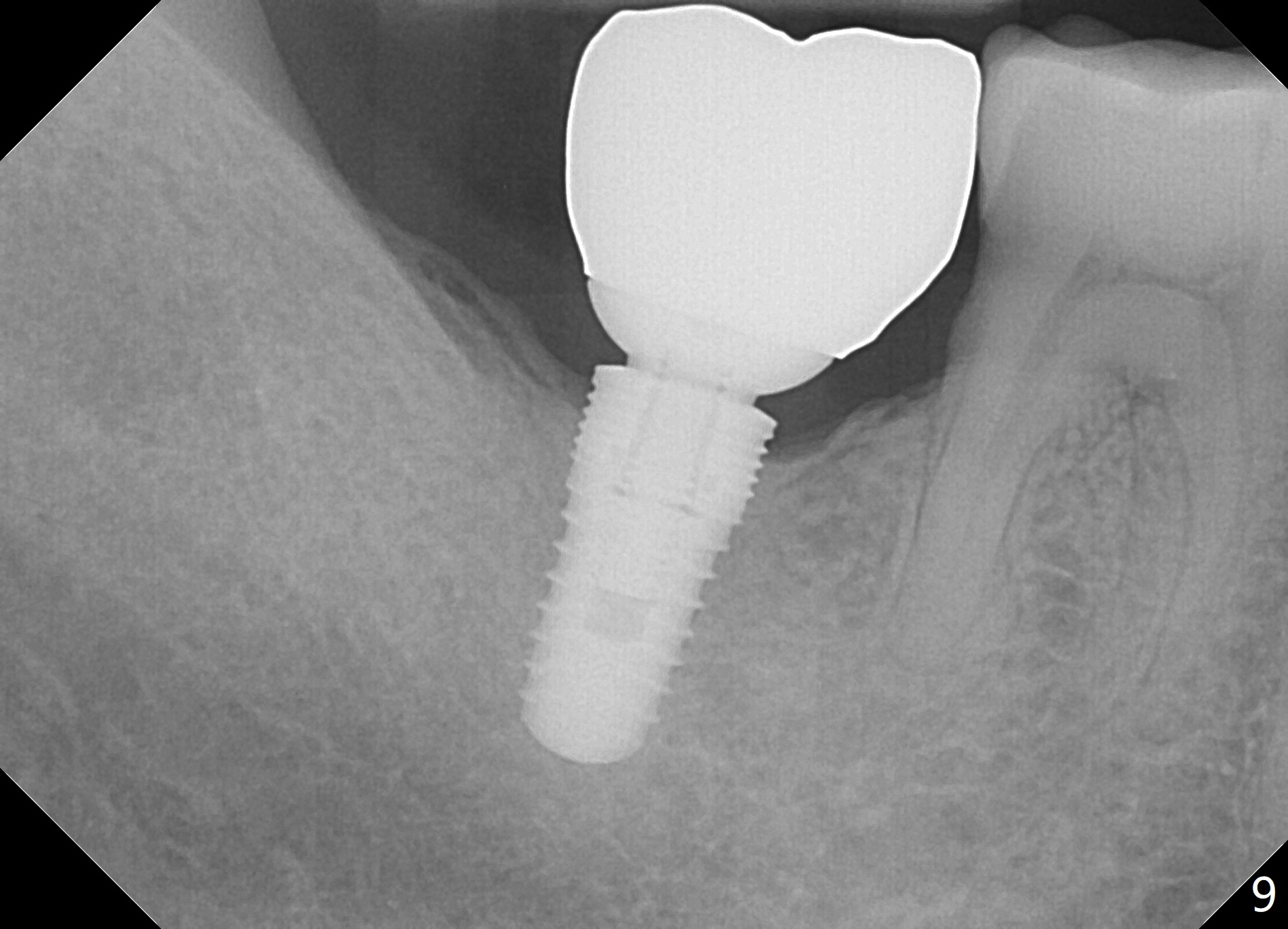
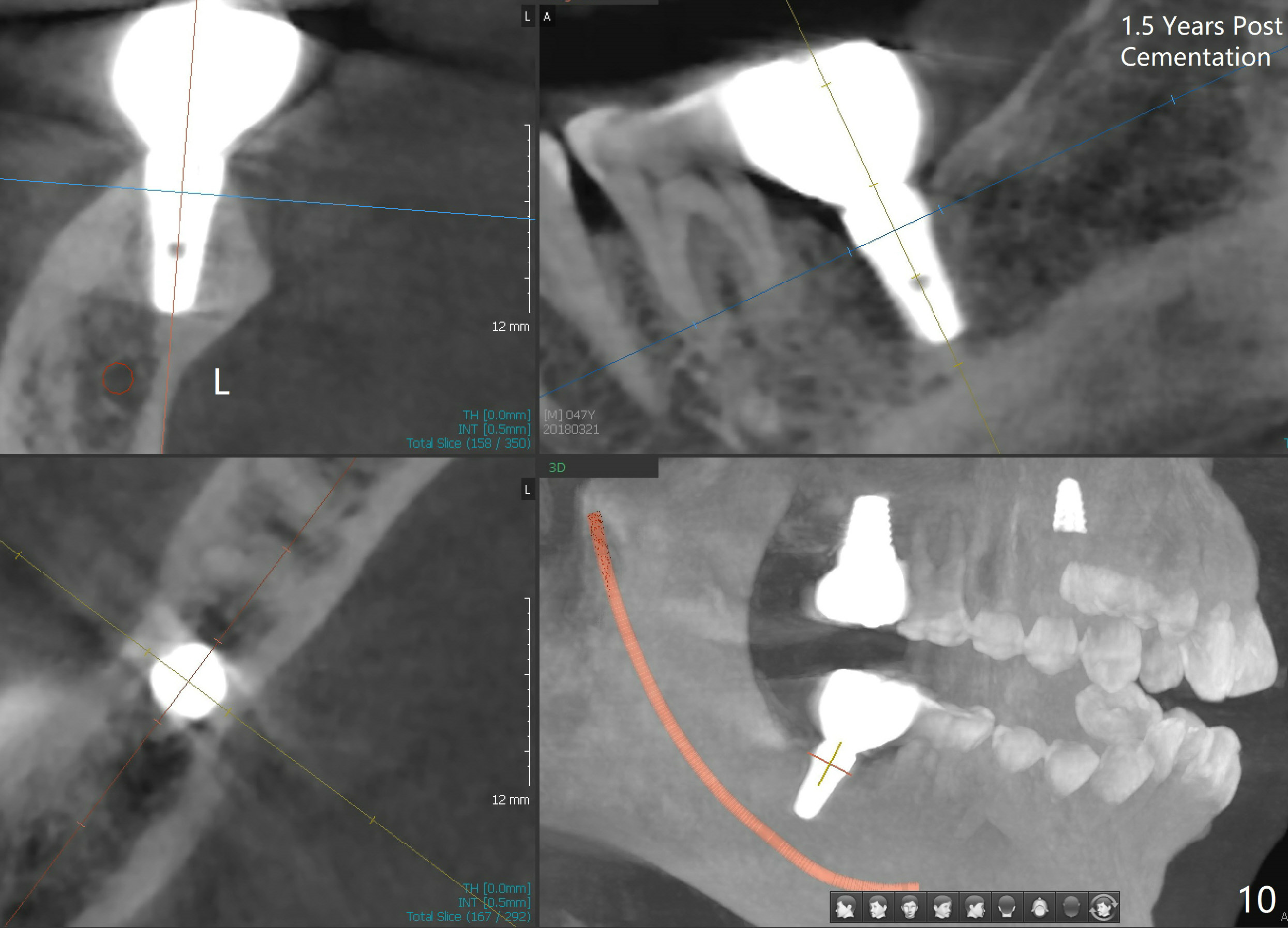
 |
 |
 |
 |
 |
.jpg) |
 |
 |
||
 |
 |
|||
Reduced Bone Height Due to Non-immediate Implant
A 45-year-old man has diabetes. His oral hygiene is poor with both caries and chronic periodontitis. Nine years ago, the tooth #31 was non-salvageable (Fig.1). He does not accept treatment readily, especially extraction. At that time, the bone height is 20 mm.
Four years later, the tooth had decayed to the roots; there is enough bone to place a 14 mm long bone-level implant (Fig.2).
The patient let the tooth exfoliate by itself (Fig.3, another 3 years later, i.e., 2 years ago).
After successful immediate implant at the site of #2, he agrees to have an implant at the site of #31. The bone height has reduced to 13 mm; it appears that a 10 mm bone-level implant is appropriate (Fig.4).
When a parallel pin is inserted with the depth of 10 mm, there is 3 mm from the superior border of the Inferior Alveolar Canal (Fig.5).
The bone feels to have relatively low density during osteotomy. The final osteotomy drill is 4.5x10 mm; a 5x10 mm implant is placed (under prep) with insertion torque >56 Ncm (Fig.6 I). A 6.8x4(2) mm cemented abutment (A) is placed immediately for an immediate provisional. The latter is opposed to the immediate provisional at #2.
The gingiva heals around the provisional 20 days postop when the patient returns for provisional reline and recementation (Fig.7 P). Note that the margin of the provisional is lower than that of the neighboring teeth, indicating bone loss due to delayed implant placement.
There appears to be bone loss coronally 15 months postop (Fig.8). There is no bone loss 1 year post cementation (2 years 3 months postop, Fig.9). If the implant were longer, it might perforate the lingual (L) plate (Fig.10 (1.5 years post cementation)).
Return to Lower Molar Immediate Implant,
Posterior Immediate Provisional,
Systemic Diseases, #2,15
Xin Wei, DDS, PhD, MS 1st edition 07/16/2015, last revision 03/23/2018